There is a particular beauty in watercolor paints but achieving that soft and organic color and movement can be challenging even for seasoned painters. Frustration and trying a new technique usually go hand in hand, but experimenting with a new medium should be an exciting opportunity, that’s why we have put together this guide for beginners on how to start painting with watercolors.
Find all the answers to your doubts about watercolor painting: from what type of tools to use to techniques and tips to put into practice and into the canvas.
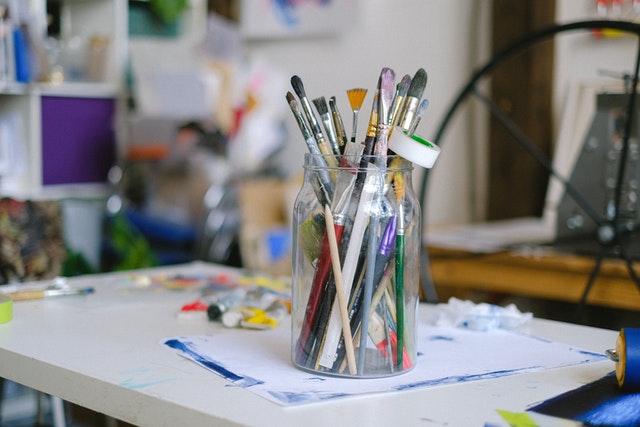
To begin painting with watercolor you need some basic supplies to help you master the technique.
Contents
Basic supplies to paint with watercolors
Before you jump into painting with watercolors, you need the right supplies. It might seem obvious to mention that you need brushes, paper, and, of course, paints, but for this particular type of paint you need a particular set of tools. These are the essential tools to begin painting with watercolors:
-Brushes: don’t go crazy, to begin painting with watercolors you’ll only need a set of round brushes (the shape is good to hold water), a flat brush to work large areas, and a thin brush for lines and small details.
-Paper: common drawing paper won’t absorb water and will probably warp under it. Watercolor paper has a weight of 140lb/300g (thicker than the usual drawing sheets). Watercolor paper is easy to recognize because it has cotton intertwined in its fibers and it has a texture of bumps known as “teeth”. The more the paper has, the more absorbent it is. But of course, this gives it an extra texture: the paper can be cold or hot pressed to offer little to no texture and a “sharper” result in the drawing.
-Paints: watercolor paints can be found in tubes and in pans. You don’t need every existing color because paints can be mixed to achieve different hues and shades, but it is a good idea to invest in high-quality paints even if the palette is limited. Watercolor pencils (they activate with water) are also available in the market.
Besides these basic tools, you’ll need separate jars of water, towels or paper for drying, and masking tape.
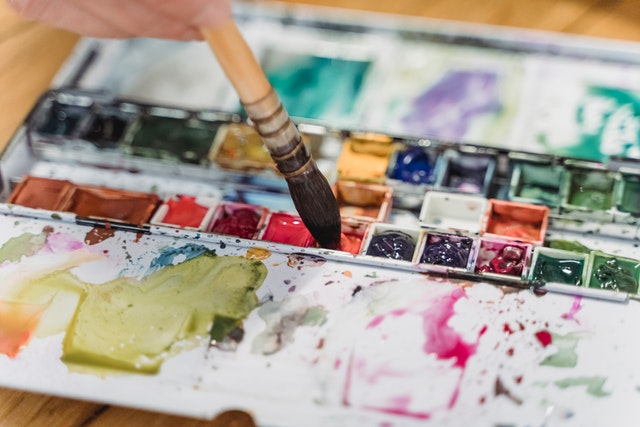
Watercolor paints have a distinctive characteristic: understanding how the pigment interacts with water is essential to working with them.
Understanding watercolor paints for beginners
Watercolors are also known as aquarelle, and it is clear to the eye that this type of paint is directly related to one thing: water. And this word tells us a lot about how this type of paint works.
From the basic watercolor set you used in middle school, to top-notch watercolor pallets, they all have something in common: they are made out of pigments mixed with a water-soluble vehicle.
When a watercolor paint is in contact with water it “thins” and dissolves making it possible to spread it with a brush.
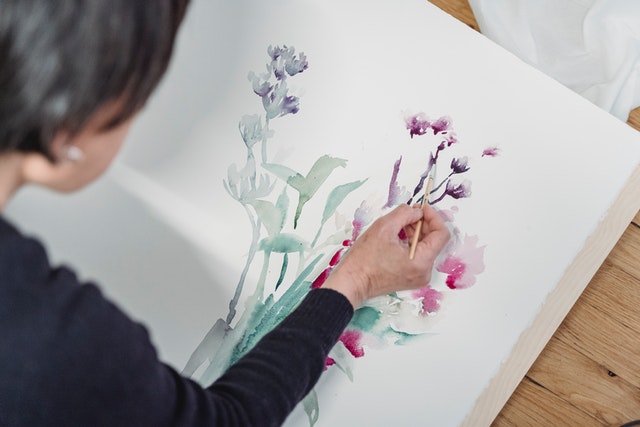
Practice makes perfect: there are different techniques and exercises to master painting with watercolors.
5 watercolor techniques to start painting
If you want to begin painting with watercolor there are several techniques that can help you exercise this skill and achieve different results in your paints. These are 5 watercolor painting techniques all beginners should try:
-Wet on wet: if you want to achieve a soft or “washed” color, grab a wet brush and “paint” a section of the paper with water, then add color with a wet brush with paint either sliding it or dabbing with it on the sheet.
-Layering: this technique consists in building up color starting with a dry surface. First, draw a line with a wet brush with almost no paint, then rinse and dry your brush before wetting it, and add a bit more paint to achieve a darker hue next to the lighter one you have recently painted, keep going until you reach the darkest hue of the color.
-Gradients: similar to layering in concept, gradients by definition involve mixing two colors. Start drawing lines with each color in each extreme of your sheet and work your way through the middle using the same technique of building up colors.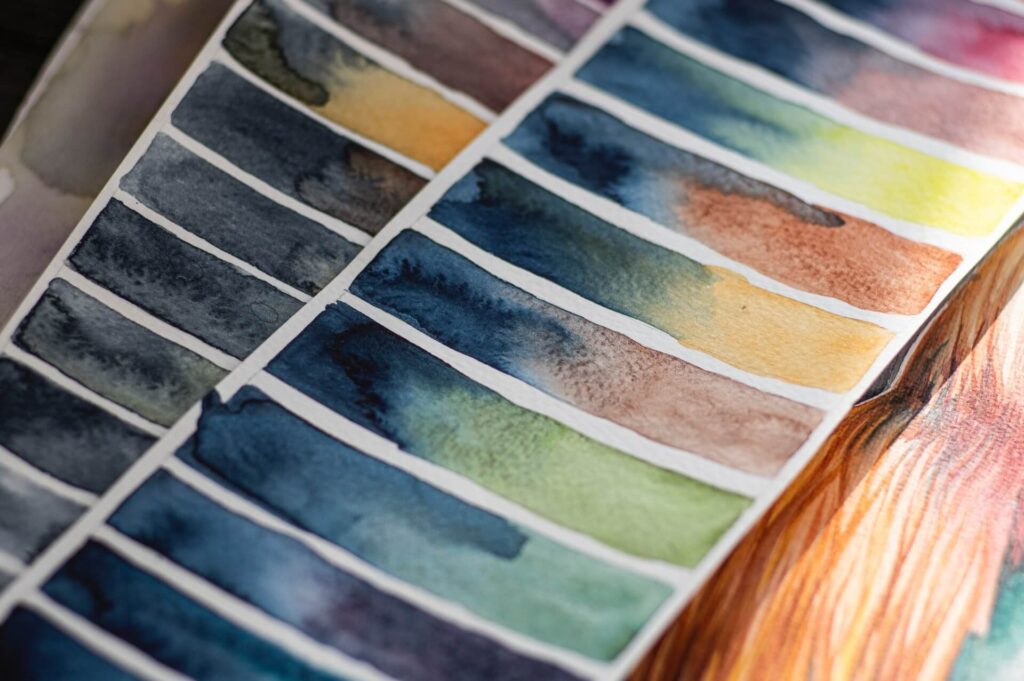
-Contouring: this exercise implies brush control and is used to create ages and shapes. A thin brush can be used to draw the outline of a specific shape and create details, you can use both a dry-on-wet or wet-on-wet approach. A flat brush can be used to work on backgrounds and shades.
-Mixing colors: besides creating color gradients, you can mix in different watercolors and different amounts of water to achieve different colors on the canvas. You can play around with different degrees of concentration of pigments and water, as well as mixing in different colors from your palette to create new ones.
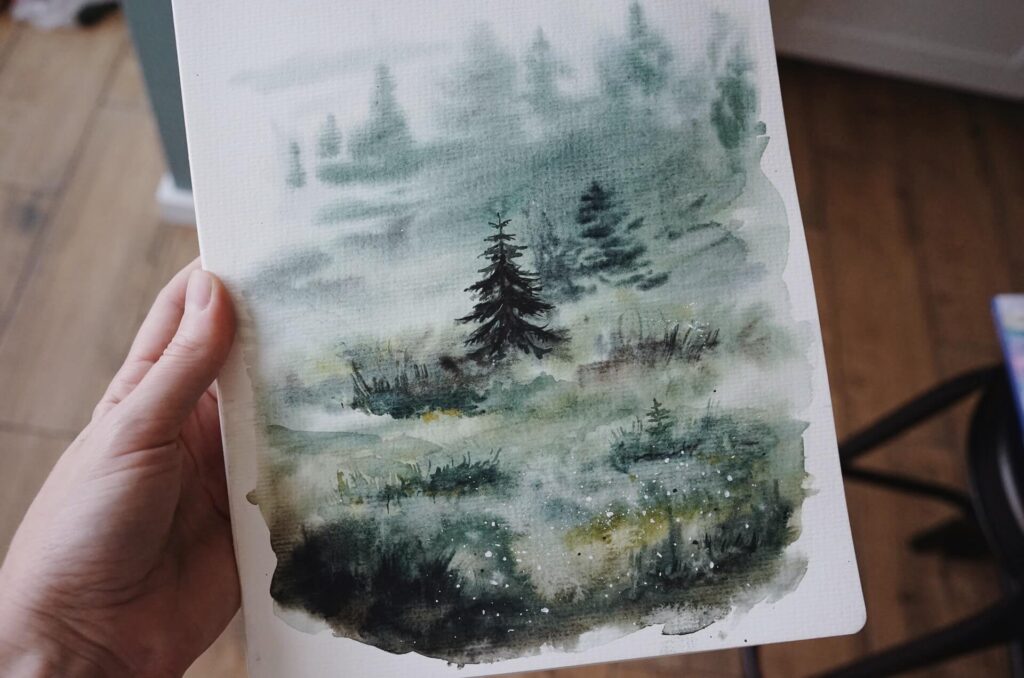
Getting inspired is essential to let your creativity flow with watercolor paints.
What to paint in watercolors
All artists, no matter how much experience they have, wonder “what should I paint?”. If you are just beginning to paint with watercolors you can look up for ideas or inspiration online: check the artwork of other creators using the same medium. Exploring a whole new medium and the techniques it requires should spark some ideas: you can experiment with it, try to adapt your usual techniques to this new type of paint or recreate certain watercolor techniques or trends. Let your imagination flow.
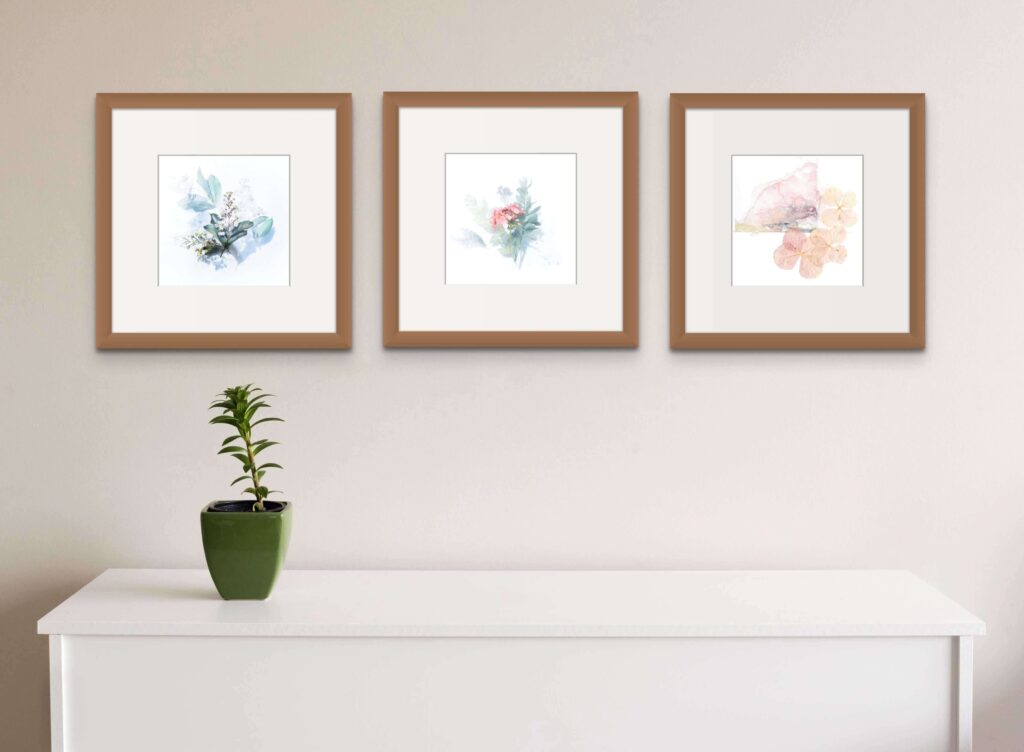
Create a digital room mock-up showing your progress in watercolor painting.
What to do with your watercolor paintings
If you have gone through the process and have made painting with watercolors a part of your art experimentation or skills, it is a good idea to have some type of record of your progress: what about creating a digital room mock-up exhibiting your favorite watercolor paint results?
With ArtPlacer’s Room Mockups, you just need to take a picture of your painting, upload them, and “drag and drop” them to a chosen room. Play around with the lighting and shadow options to enhance how the piece looks and give the image a real-life look by adding a customer frame: with a few clicks you can design your own frames with a particular width, material, mat, and color! In a couple of minutes, you’ll have a social media-worthy cropped image to share or save.
Now is time to take your watercolor paints and begin creating your next piece!
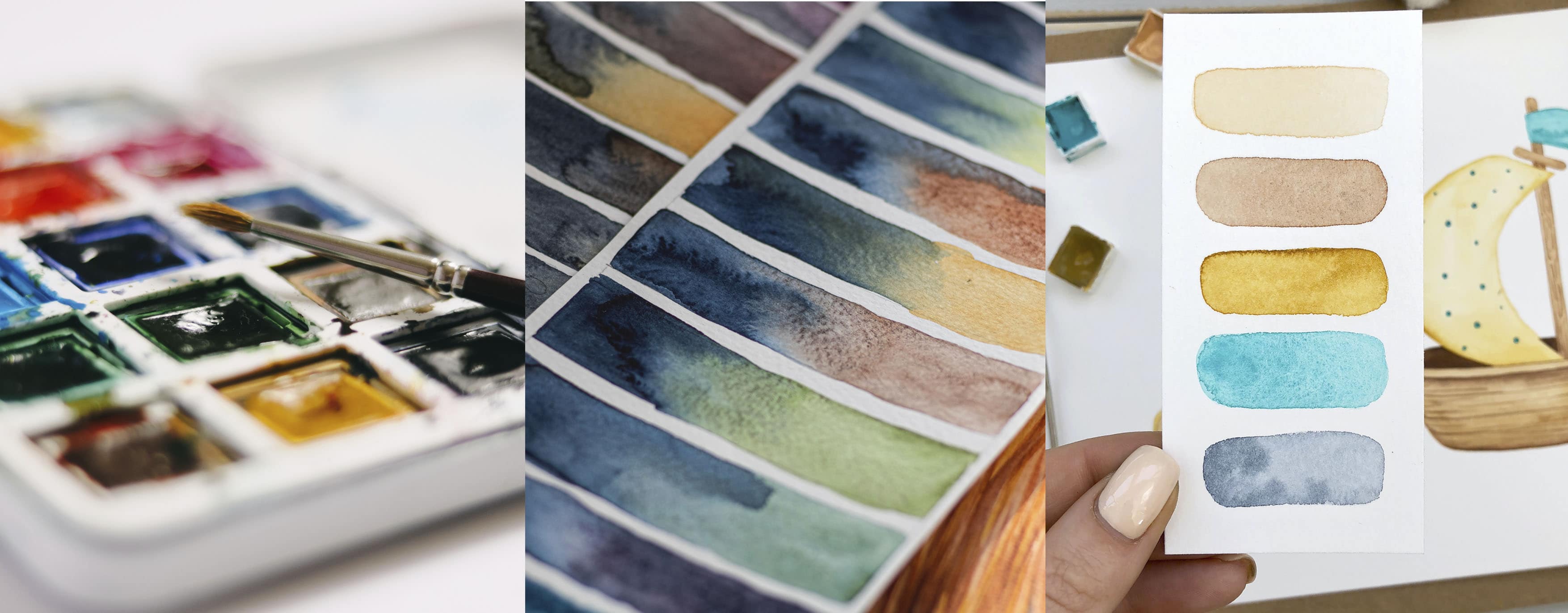

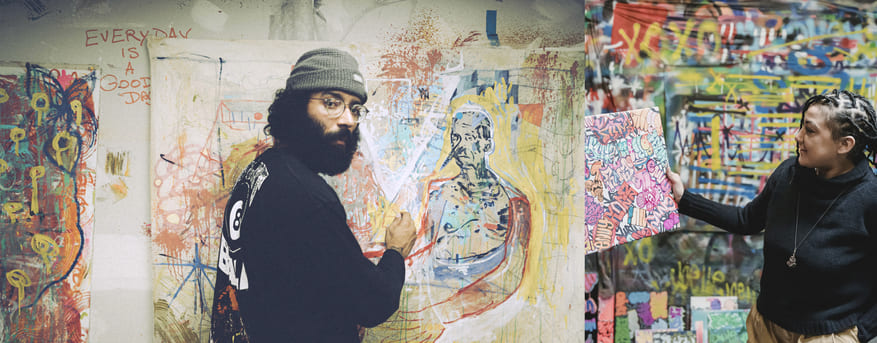
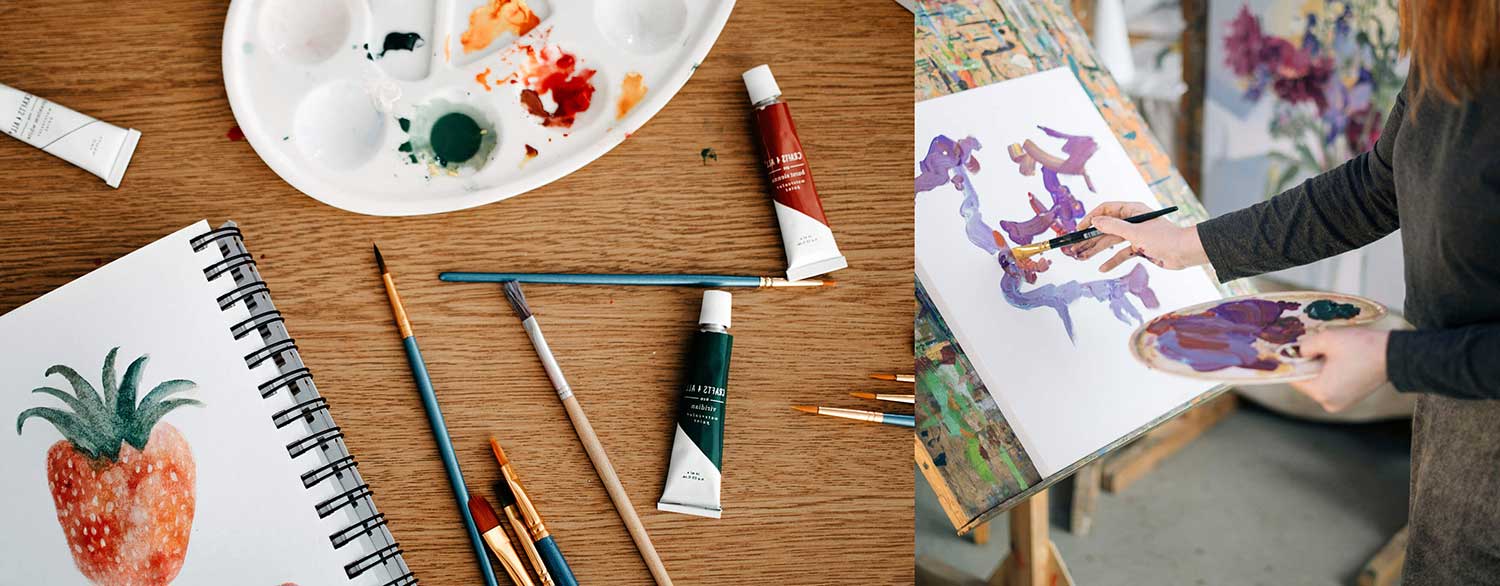

I appreciate you sharing this blog post. Thanks Again. Cool.